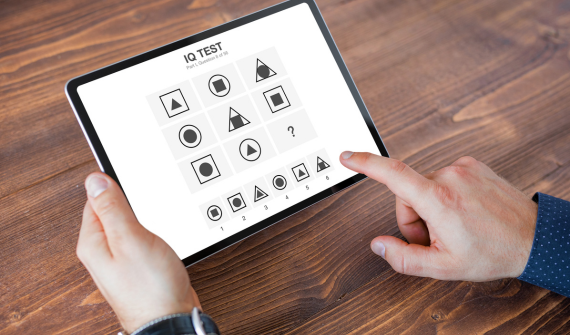Saudi Arabia, a country known for its commitment to education and technological advancement, is on the cusp of a significant transformation in its educational landscape.
The power of innovation in education technology (EdTech) has the potential to revolutionize the Saudi education system and usher in a new era of learning.
With a strong emphasis on providing quality education to its citizens, Saudi Arabia is poised to leverage the power of EdTech to enhance student engagement, and personalized learning experiences, and equip students with the skills needed for the future.
In this era of rapid technological advancements, Saudi Arabia recognizes that more than traditional teaching methods are needed to meet the evolving needs of students and prepare them for a globally competitive world.
By embracing innovation in education technology, Saudi Arabia aims to create a dynamic and inclusive learning environment that empowers students to develop critical thinking, problem-solving, and digital literacy skills.
This article explores the potential impact of EdTech in Saudi education, highlighting key areas where innovation can drive positive change and propel the country towards a knowledge-based economy.
What Is Innovation In Education?

Innovation in education refers to the introduction and implementation of new ideas, strategies, methods, technologies, and approaches that aim to enhance the teaching and learning process.
It involves finding creative solutions to challenges in education and reimagining traditional practices to better meet the needs of students in a rapidly changing world.
Innovation in education can take various forms, such as:
1. Technology Integration
The use of educational technology, such as digital devices, software applications, online platforms, and interactive tools, to enhance instruction, facilitate learning, and engage students in new ways.
2. Pedagogical Approaches
The development and application of innovative teaching methods, such as project-based learning, inquiry-based learning, flipped classrooms, and personalized learning, encourage critical thinking, problem-solving, collaboration, and creativity.
3. Curriculum Design
The creation of flexible and relevant curricula that align with the skills and knowledge required in the 21st century.
This may involve incorporating interdisciplinary subjects, real-world applications, and experiential learning opportunities.
4. Assessment Strategies
The adoption of alternative assessment methods that go beyond traditional exams and focus on evaluating students' deeper understanding, skills, and competencies.
This includes performance-based assessments, portfolios, and self-assessment techniques.
5. Learning Environments
The design of physical and virtual learning spaces that foster collaboration, creativity, and exploration.
This can include flexible classroom layouts, collaborative workstations, and online platforms for virtual learning and communication.
Innovation in education aims to improve educational outcomes, enhance student engagement, and better prepare learners for the challenges of the future.
It encourages a learner-centred approach, promotes critical thinking and problem-solving skills, and seeks to create inclusive and equitable learning opportunities for all students.
Why Is Strategic Innovation In Education Important?

Strategic innovation in education is of utmost importance due to several key reasons:
1. Adapting To Changing Needs
The world is evolving at an unprecedented pace, with advancements in technology, globalization, and the emergence of new industries.
Strategic innovation in education allows educational institutions to adapt their approaches, curricula, and methodologies to meet the changing needs of students and prepare them for the future job market.
2. Enhancing Learning Outcomes
Strategic innovation enables the development and implementation of effective teaching and learning practices that improve educational outcomes.
By incorporating innovative approaches, such as personalized learning, project-based learning, and technology integration, students can be more engaged, motivated, and equipped with the necessary skills and knowledge.
3. Addressing Equity And Inclusion
It focuses on bridging the gaps in access and opportunity for all students.
By employing innovative strategies, educational institutions can address inequalities, provide access to quality education for marginalized communities, and create inclusive learning environments that cater to diverse learner needs and backgrounds.
4. Fostering Creativity And Critical Thinking
Strategic innovation promotes creativity, critical thinking, problem-solving, and innovation among students.
It encourages them to think outside the box, explore different perspectives, and develop the skills required for the complex challenges of the future.
5. Embracing Technological Advancements
Strategic innovation allows educational institutions to leverage the power of technology to enhance teaching and learning.
By integrating educational technology tools, institutions can create interactive learning experiences, provide personalized learning pathways, and facilitate access to a wealth of digital resources.
6. Responding To Global Competitiveness
Strategic innovation ensures that education systems remain competitive on a global scale.
By continuously seeking innovative approaches, educational institutions can equip students with the skills, knowledge, and adaptability necessary to thrive in a globally interconnected world.
7. Driving Economic Growth
Strategic innovation plays a vital role in driving economic growth and development.
By preparing a highly skilled and innovative workforce, educational institutions contribute to the creation of a knowledge-based economy that can compete in global markets and attract investment.
In summary, strategic innovation in education is crucial for adapting to change, improving learning outcomes, addressing equity, fostering critical thinking, embracing technology, competing globally, and driving economic growth.
It enables educational institutions to meet the evolving needs of students and society while preparing them for a future characterized by rapid change and technological advancements.
Innovation In Education Technology

Innovation in education technology, commonly known as EdTech, refers to the development and application of innovative technologies and digital tools to enhance teaching and learning experiences.
It encompasses the creation and implementation of new software applications, hardware devices, online platforms, and learning management systems that transform the educational landscape.
Here are some key areas of innovation in education technology:
1. Personalized Learning
EdTech allows for the customization of learning experiences based on individual student needs, interests, and learning styles.
Adaptive learning platforms and intelligent tutoring systems use data analytics and algorithms to deliver tailored content, provide personalized feedback, and track student progress.
2. Online And Blended Learning
EdTech enables online and blended learning models, expanding access to education beyond traditional classrooms.
Virtual classrooms, video conferencing tools, and learning management systems facilitate remote learning, collaboration, and the creation of digital learning communities.
3. Gamification And Simulations
Educational games, simulations, and gamified learning platforms leverage the power of play and interactivity to engage students and make learning enjoyable.
Gamification elements, such as points, badges, and leaderboards, can motivate learners, promote healthy competition, and enhance the retention of knowledge.
4. Virtual Reality (VR) And Augmented Reality (AR)
VR and AR technologies provide immersive learning experiences, allowing students to explore virtual environments and interact with virtual objects.
They bring abstract concepts to life, enhance understanding, and provide practical training in fields such as science, engineering, and healthcare.
5. Data Analytics And Learning Analytics
EdTech tools gather and analyze large amounts of data to gain insights into student performance, engagement, and learning patterns.
Learning analytics helps educators make data-informed decisions, identify areas of improvement, and provide targeted interventions to support student success.
6. Collaboration And Communication Tools
EdTech fosters collaboration and communication among students and educators.
Online discussion forums, collaborative document editing tools, and video conferencing platforms facilitate group work, peer feedback, and global connections.
7. Artificial Intelligence (AI) And Machine Learning
AI and machine learning technologies are being used in EdTech to automate administrative tasks, develop intelligent tutoring systems, and provide personalized recommendations.
AI-powered chatbots can offer instant support and guidance to students, while AI-driven content analysis can provide insights into student performance.
Innovation in education technology has the potential to improve learning outcomes, increase access to education, personalize instruction, and prepare students for the demands of the future.
It empowers educators and learners with powerful tools to engage, inspire, and transform the educational experience.
Innovating Education With Oreed
1. Effortlessly Manage Your Workforce
Discover the convenience of Oreed, a comprehensive education intelligence platform designed to streamline employee communication and training.
Eliminate the complexity of handling multiple platforms.
2. Unlock Enhanced Employee Insights
Gain a holistic understanding of your employees through Oreed's 360-degree analytics. Identify their needs, strengths, and areas that require improvement.
Deliver personalized training that targets specific areas of growth.
3. Precisely Measure Training Impact
Effortlessly track the effectiveness of your training initiatives using Oreed's detailed reports and analytics.
Identify opportunities for improvement and make informed decisions to enhance your training strategies.
4. Streamline Processes, Boost Productivity
Say goodbye to the hassle of managing multiple platforms.
Oreed simplifies your processes, saving valuable time and resources. Enhance employee engagement, retention, and productivity with a more efficient training program.
Explore the ultimate all-in-one platform for seamless employee communication and training.
Embrace Oreed and transform the way you manage and develop your workforce.
5. 2030 Vision
The importance of innovation and technology in the education sector cannot be overstated.
As we move towards a future driven by technology, it is crucial to embrace innovative solutions that enhance the quality of education and prepare students for the challenges ahead.
Vision 2030, Saudi Arabia's ambitious plan for economic and social transformation, recognizes the significance of modernizing the education system through the integration of advanced technologies.
Oreed's education intelligence platform is perfectly aligned with this objective.
By leveraging cutting-edge technology, Oreed streamlines employee communication and training, making the management of educational processes more efficient and effective.
It provides a comprehensive view of employees, enabling personalized training tailored to their unique needs and fostering continuous growth.
With Oreed's detailed reports and analytics, the impact of training efforts can be precisely measured, allowing for data-driven decision-making and continuous improvement.
By embracing Oreed's education intelligence platform, educational institutions in Saudi Arabia can effectively harness the power of innovation and technology, aligning themselves with Vision 2030's vision of a modernized and high-quality education system.
The integration of advanced technologies, such as Oreed, will drive progress, empower educators and learners, and position Saudi Arabia as a leader in education innovation on the global stage.
So what are you waiting for? Book a demo with Oreed today and find out more about our features.
Promote lifelong learning through Oreed by experiencing the most powerful all-in-one training and development intelligent platform that streamlines all your organization's learning, training, and development activities in one place.
Final Thoughts
Innovation in education technology has the potential to revolutionize Saudi education, enhancing the quality of learning and equipping students with future-ready skills.
By embracing advanced technologies, Saudi Arabia can personalize education, promote critical thinking, and align with Vision 2030's objectives.
Collaboration between institutions, tech providers, and policymakers is crucial for effective implementation.
Together, we can transform education and empower learners to succeed in an ever-evolving world.
FAQs
1. What is an example of innovation in education?
By immersing students in realistic and interactive virtual environments, VR enhances learning experiences and promotes a deeper understanding of complex subjects.
For instance, medical students can virtually explore the human body, fostering a hands-on understanding of anatomy.
This example of innovation in education demonstrates how technology can revolutionize traditional teaching methods and engage learners in new and exciting ways.
2. What is the Center for Innovation in Education?
As a hub for educators, researchers, and professionals, the Center promotes the development and implementation of innovative practices, methodologies, and technologies to enhance teaching and learning.
By providing resources, training, and collaborative opportunities, the Center empowers individuals and institutions to transform education and prepare learners for the future.
The Center for Innovation in Education is committed to driving positive change and fostering a culture of innovation in education.


![Learning Experience Platform Market Size [2024]](/cdn/1619638329_6089b83993722/1658391437_62d90b8d45216/1658391471_62d90baf0898f/1702465413_65798f85e1464/1702465413_65798f85e1078.jpeg)
![What is a Learning Experience Platform [2024 Full Guide]](/cdn/1619638329_6089b83993722/1658391437_62d90b8d45216/1658391471_62d90baf0898f/1702464014_65798a0ecf990/1702464014_65798a0ecf60a.jpeg)

